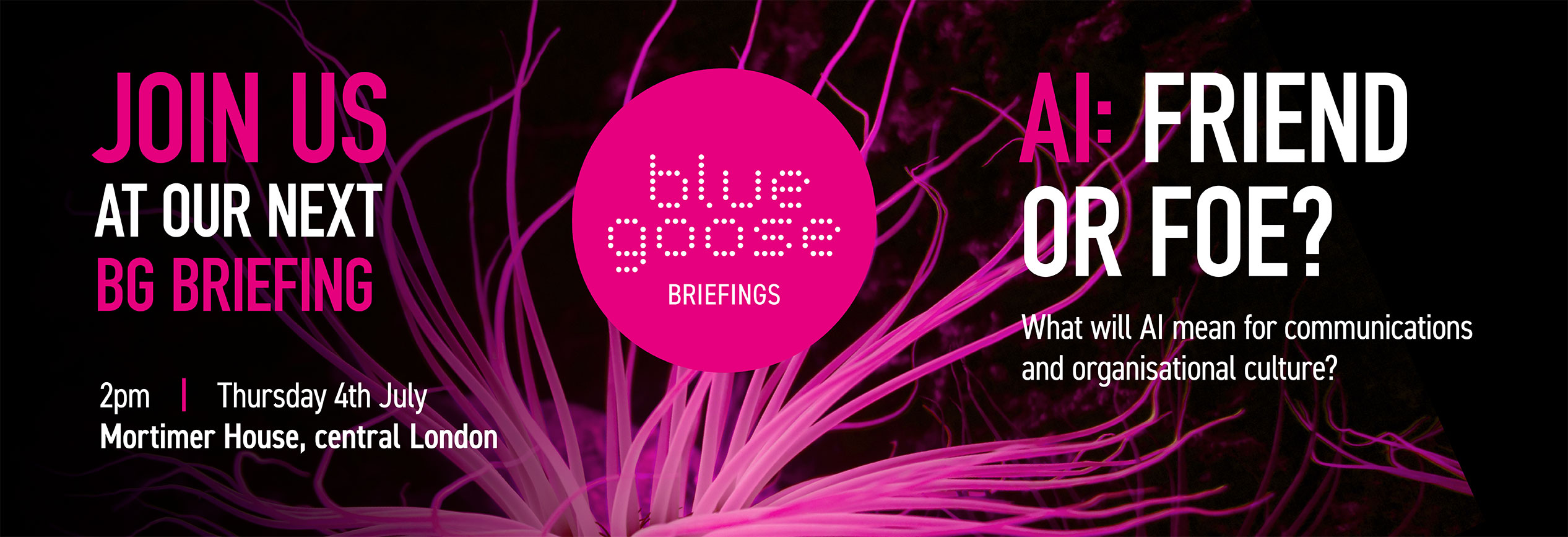Blue Goose internal communications specialist, Stan Methven, considers the impact of mental health programmes and what you can do so that your wellbeing campaign makes a difference.
According to The World Health Organisation $3,747 billion is lost each year in productivity due to employee mental health issues.
The concept of focusing on workplace mental health programmes to support wellbeing is not new, we all know this.
Organisations around the world, every year, recognise mental health and the importance of focusing on it.
From launching mental health programmes aiming to create an open culture where mental health is spoken about and destigmatised, to posting on their social media accounts in support of mental health illness sufferers.
While these are obviously seen as needed to change the perception of mental health illness at work, there is contention around their success.
A study from William Fleming from Oxford University, where he analysed a survey of over 46,000 individuals and over 200 organisations, published earlier this year revealed that overwhelmingly the programmes and initiatives made no difference to an individual’s wellbeing, while a study of nearly 33,000 employees at a US warehousing company also found little evidence of improved wellbeing.
So despite generous spending in the billions of dollars annually, why don’t these programmes work?
Lack of wellbeing leadership commitment
One of the primary reasons that workplace mental health initiatives fall short is insufficient buy-in or visible support from senior management.
It’s no secret that support from the C-suite can create trust and motivation, so when leadership is not seen to be fully committed, it sends a message that employee wellbeing isn’t an organisational priority.
The perception of a lack of commitment can be caused by a lack of championing internally and externally but also by a perceived under-allocation of resources. If employees see that initiatives aren’t fully backed corporately there’s a high chance that the programme could be seen as a superficial tick-box exercise.
Poor program design for employee wellbeing
Many initiatives are poorly designed, taking a generalist approach based on broad assumptions rather than insight, leading to a one-size-fits-all approach.
Using organisational insights to build programmes is a must. Asking what people want, while ensuring their privacy, can help shape an offer that is highly used and more likely produce meaningful results rather than a blanket initiative that focuses on areas that workforces aren’t interested in. Using insight from previous campaigns is also an easy way to steer planning if refreshing campaigns or initiatives.
The evaluation of campaigns, or lack thereof, can also be a determining factor of programme design and ultimately success. Many organisations fail to establish clear goals and evaluation methods to measure programmes effectiveness. Without proper assessment, it’s difficult to determine if initiatives are actually improving employee wellbeing.
Employee Engagement Challenges
Even well-designed programmes can fail if they fail to capture the attention of employees.
The Institute of Internal Communications found last year that employees only have 15 minutes a day to focus on internal communications. This and the likelihood that there will be various other initiatives competing for employee time can create a big challenge for engagement.
So there is a need to get it right the first time, as there might not be a second chance.
Successful campaigns, more often than not, effectively communicate their value without disrupting long term corporate communications. Fitting in seamlessly while also standing out on their own.
Tapping into channels and activations that are known to already work for targeted audiences is a good place to start. But it also has to feel fresh and different to strike a chord that this campaign is the one to focus on. Especially when mental health stigma in the workplace is still high, whether it be self-stigma, peer stigma or organisational stigma.
Do you really mean it?
Another reason mental health and wellbeing programmes can fail is that it might not fit, and therefore feels disingenuous.
People can see it a mile off. We’re all too familiar with ‘Wellbeing Wednesdays’ and pizza parties, on their own they don’t feel authentic and I’m not sure if they ever have. While they could have their place as part of a wider campaign, quick fixes on their own won’t work when trying to realign a culture to foster positive wellbeing and mental health.
Treating mental health initiatives as separate to organisational culture is a mistake, sometimes the key is to understand and address the deeper systemic issues.
Analysing the current state of play, the intended cultural outcomes and what organisational changes might be needed to get there will be what makes difference
We can help improve your Workplace Mental Health Programmes
Ultimately, for initiatives to work the programmes need to be well thought out, tailored to your people and rolled out in a way that makes sense to your people and builds momentum and engagement.
To learn more about how we can help build a mental health and wellbeing communications campaign that works for your people, get in contact by emailing hello@bluegoose.co.uk



